Retro Replay Review
Gameplay
Das Stundenglas offers a classic interactive fiction experience with a clever twist on time manipulation. Players navigate the game world entirely through text commands, typing simple verbs and nouns to interact with objects, converse with characters, and solve puzzles. The command parser is surprisingly forgiving, recognizing a variety of synonymous terms, which makes exploration feel more intuitive despite the text-only interface.
(HEY YOU!! We hope you enjoy! We try not to run ads. So basically, this is a very expensive hobby running this site. Please consider joining us for updates, forums, and more. Network w/ us to make some cash or friends while retro gaming, and you can win some free retro games for posting. Okay, carry on 👍)
The core mechanic revolves around a generous but strict 24-day time limit. Every action—moving between locations, conversing with NPCs, picking up items—advances the in-game clock, so strategic planning is crucial. Day and night cycles alter the availability of certain characters and objects, requiring players to learn daily routines and schedule their activities carefully.
What sets Das Stundenglas apart is its dual-realm system. The hourglass’s disappearance has split the fairy-tale kingdom into two parallel realities, and you must switch between them to gather twelve magical coins. Each realm holds unique buildings and inhabitants, so some puzzles can only be solved by shuttling back and forth at precise times. This dimension-jumping adds depth and replay value, encouraging experimentation and careful note-taking.
Completing favors for each of the twelve inhabitants is the driving force behind the quest. These tasks range from simple fetch quests to multi-step puzzles that intertwine with the day-night rhythm. Balancing these favors—some of which have time-sensitive deadlines—creates a satisfying challenge and gives the gameplay a vibrant, living-world feeling.
Graphics
Although Das Stundenglas is primarily a text-driven adventure, the inclusion of static illustrations elevates the immersion. Most locations feature two distinct images: one for day and one for night. These visuals, rendered in a charming, hand-drawn style, help convey the mood of each scene and reinforce the impact of the time cycle on the environment.
The graphic design leans into a fairy-tale aesthetic, with whimsical line work and delicate shading. Trees sway gently in the morning light, taverns glow warmly under the moon, and castle walls loom ominously at dusk. While the palette is limited by the technology of the era, the art effectively captures the game’s fantastical atmosphere.
Switching between realms also introduces subtle visual changes that hint at hidden paths and secret doors. Buildings that appear dilapidated in one reality might stand pristine in the other, and minor color shifts in the background can alert observant players to new opportunities. These graphical cues are not merely decorative but integral to puzzle-solving.
Overall, the graphics strike a balance between evocative illustration and functional design. They never overshadow the text but provide just enough visual context to enrich the storytelling. For an interactive fiction title from the mid-1980s, these images remain surprisingly engaging and contribute meaningfully to the exploration experience.
Story
The narrative of Das Stundenglas unfolds like a classic European fairy tale. You begin by stepping into a mysterious chest and find yourself in an enchanted land fractured by the loss of a magical hourglass. This artifact once regulated the flow of time, and without it, the kingdom has been split into two overlapping realities.
As you explore, you discover that twelve inhabitants possess magical coins—shards of the hourglass’s power. Each character is wonderfully distinct, from the sorrowful princess who wanders her gardens at dawn to the mischievous jester who only emerges under a full moon. Befriending these figures and performing favors for them reveals more of the world’s lore, adding layers of depth to the quest.
The story manages to balance urgency with whimsy. The 24-day time constraint injects forward momentum, but the daily routines of NPCs encourage you to pause and appreciate the little details. Villagers gossip about strange occurrences, shopkeepers change their wares with the moon phases, and hidden messages surface only when you observe the right event at the right hour.
By weaving together these encounters and environmental clues, the game delivers a cohesive narrative that feels both epic and personal. The rescue of the hourglass becomes more than a mechanical puzzle—it transforms into a journey of discovery, friendship, and the restoration of balance in a beautifully realized fairy-tale realm.
Overall Experience
Das Stundenglas stands out as a masterful example of German interactive fiction. Its blend of time management, parallel-world exploration, and character-driven quests creates an adventure that is both challenging and richly rewarding. The game’s pacing encourages thoughtful play, and every decision—no matter how small—can influence your chance to succeed within the 24-day limit.
The text-based interface demands patience and a willingness to experiment, but for players who embrace its old-school charm, the payoff is substantial. The day-night graphics, the memorable cast of characters, and the ticking clock all combine to form an experience that feels alive and dynamic, even decades after its release.
One potential hurdle is the language barrier: Das Stundenglas is entirely in German, and while the parser accepts a broad vocabulary, a solid command of the language is essential. However, for German-speaking fans of interactive storytelling, the game remains a standout title—especially considering that it’s now available as a free download from various fan archives.
In summary, Das Stundenglas offers a compelling journey through a fractured fairy-tale world, driven by inventive puzzles, evocative graphics, and a narrative that unfolds with every sunrise and moonrise. Its innovative dual-realm mechanic and time-based challenges ensure that even seasoned adventurers will find something new on each playthrough. Highly recommended for anyone seeking a thoughtful, atmospheric interactive fiction experience.
 Retro Replay Retro Replay gaming reviews, news, emulation, geek stuff and more!
Retro Replay Retro Replay gaming reviews, news, emulation, geek stuff and more!
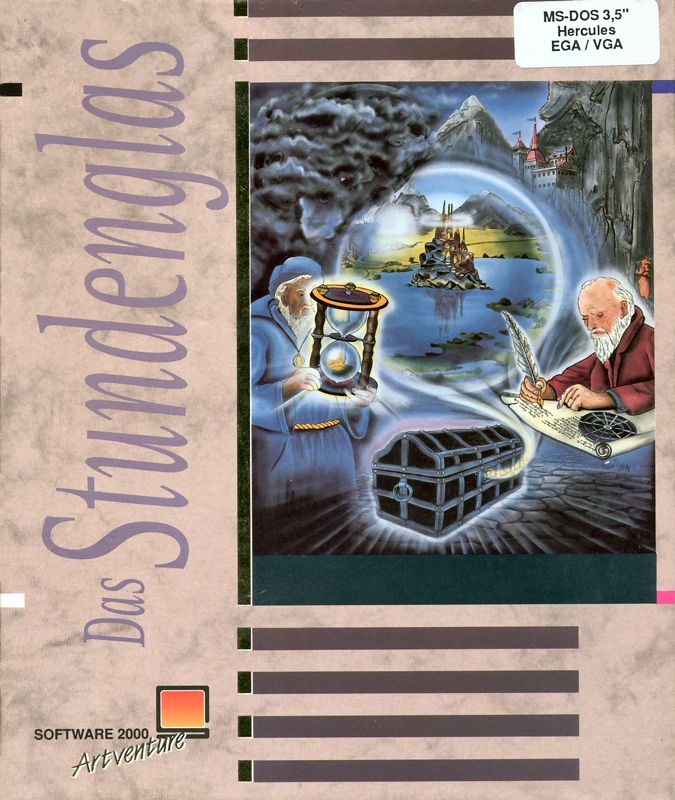
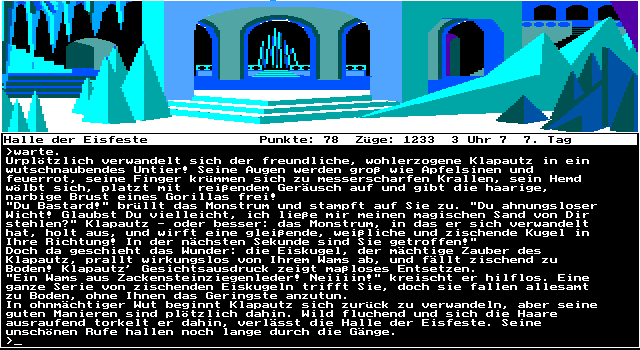
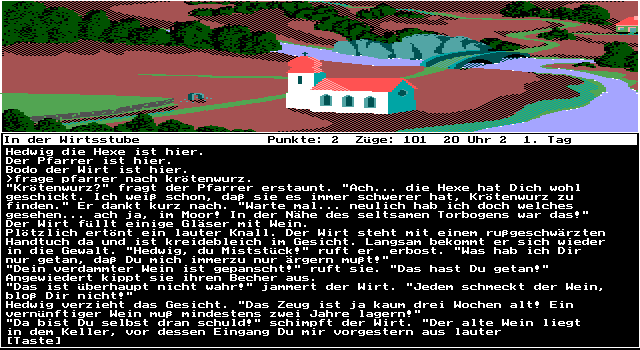
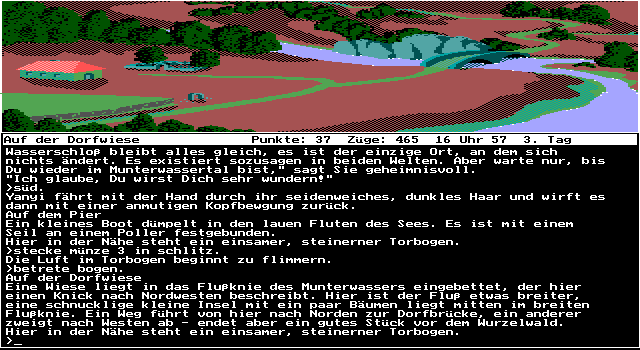
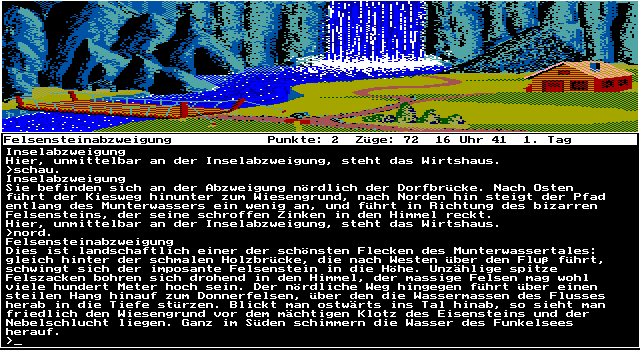
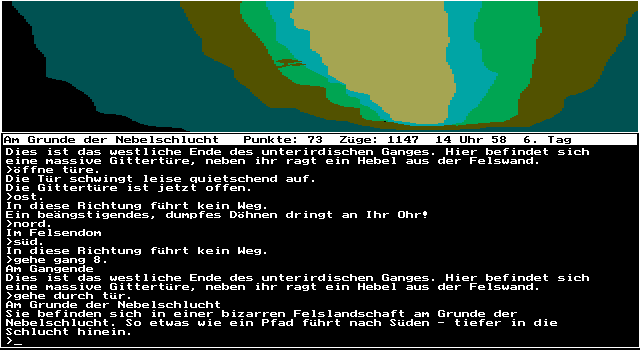



Reviews
There are no reviews yet.